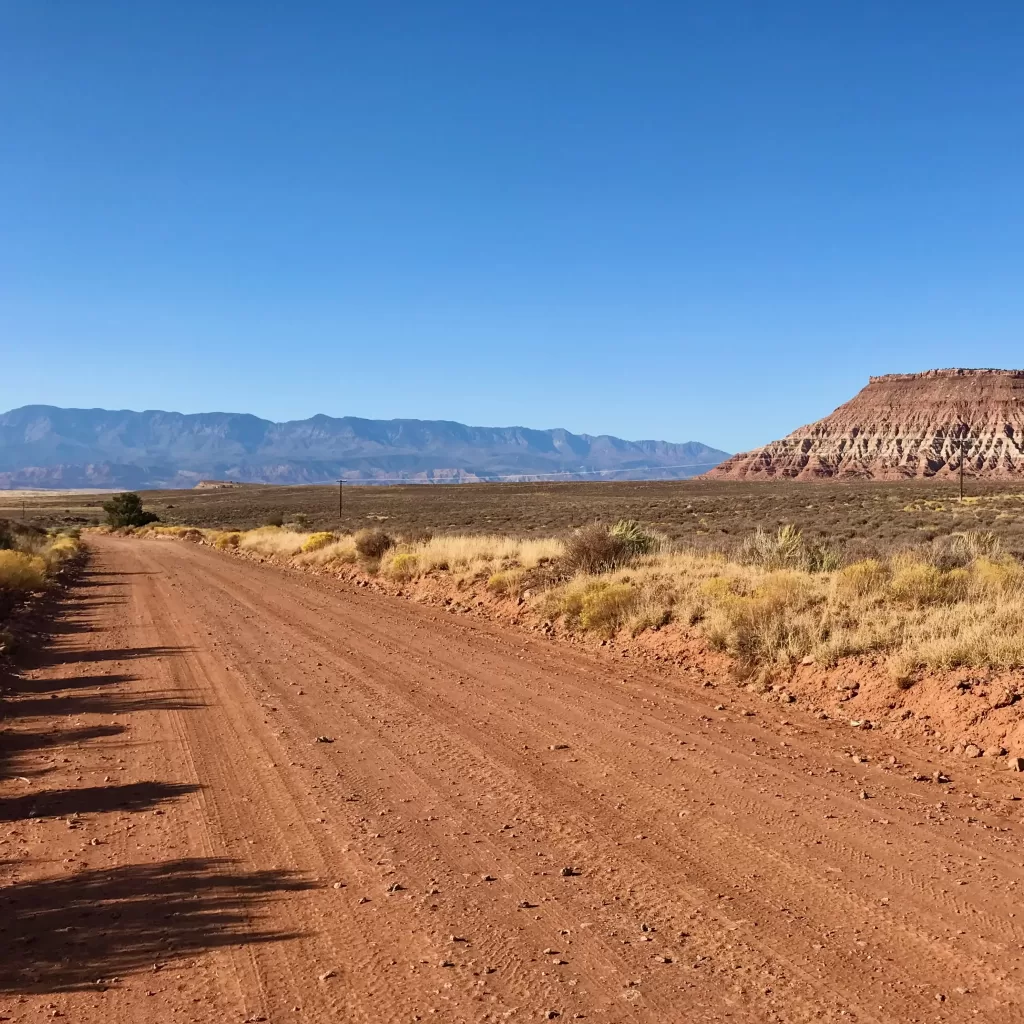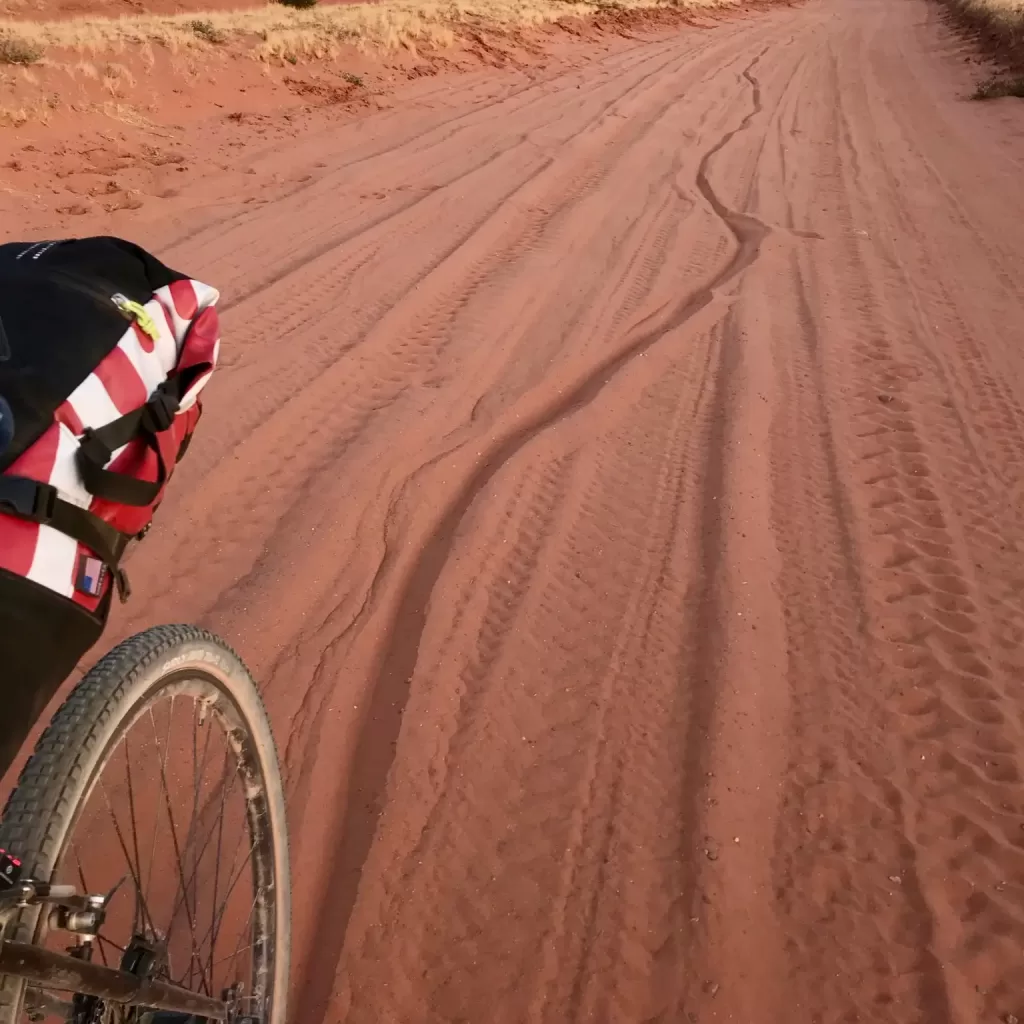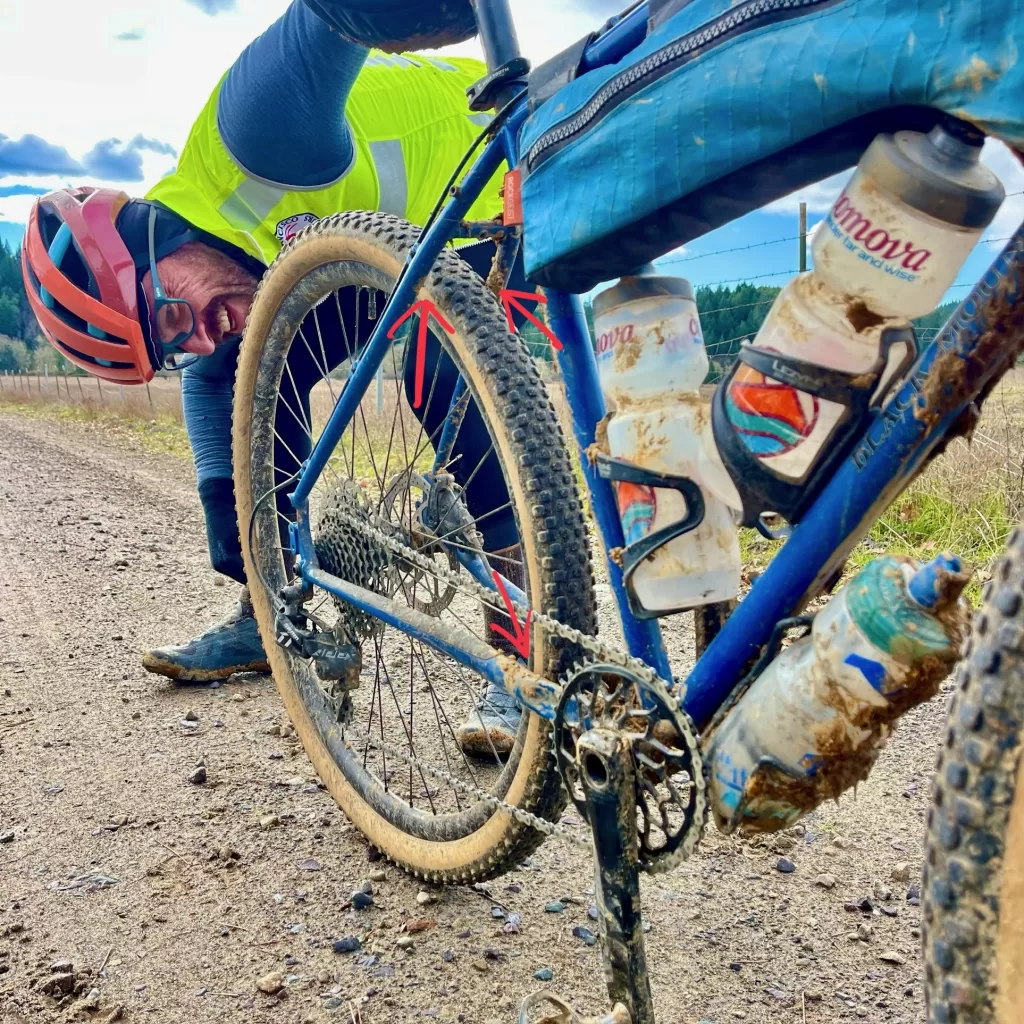If you want to quickly overwhelm yourself with finding the “best gravel tire,” just run a quick search. Top hits will include:
- Bicycling‘s The ultimate tire gravel guide
- Bike Radar‘s The best gravel bike tyres in 2024
- Cycling Weekly‘s Best gravel bike tires 2024 for extra grip, volume and speed; and
- Gran Fondo‘s Gravel tire group test – On the search for the best all-rounder
Read any one of these guides–or go down the YouTube rabbit hole of videos with similar titles–and you’ll quickly find yourself deep in the weeds of jargon. Even the way various gravel surfaces are described can be confusing. Did you know there are four types of gravel?
- Type 1: Smooth, well-maintained dirt roads with little to no small gravel
- Type 2: Dirt roads with potholes, washboards and loose corners
- Type 3: Poorly maintained roads with bigger rocks, ruts and/or sand
- Type 4: Non-maintained tracks or roads with deep layers of sharp gravel (these were originally defined by Neil Shirley as described by Ben Delaney here)
Why so much focus on surface variations? Because most gravel tire guides start with the following assumptions:
- traction is the most important characteristic of a tire;
- different types of gravel surfaces require different types of tire tread to optimize traction; and
- as the surface goes from smooth to rough (i.e., Type 1 to Type 4 gravel), a rider needs a more aggressive tire tread (more knobs, larger knobs, and knobs running across the tire from shoulder to shoulder) to maintain traction
These assumptions, in turn, suggest that in order to maintain traction a good gravel cyclist must become an expert on matching conditions with tire tread. You must gather the data to determine if you’ll be riding Type 1, 2, 3 or 4 gravel. Don’t forget to factor in how rain (or lack of it) might have turned a Type 1 gravel road into a Type 2 or 3 gravel road.
Next decide whether you need a semi-slick, small knob or big knob tire. Once this decision is made, you’re ready to mount the proper tires. But don’t forget to choose your optimal tire pressure! Now, finally, you are ready to go out and ride!
If agonizing over tire choice and the hassle of repeatedly changing tires become impediments to riding, something has gone terribly wrong. That’s why I decided that the average cyclist needs a simplified guide to choosing gravel tires.
My premise in this simplified gravel tire guide is that us average cyclists really only need tires that are practical for the everyday type of riding we do. And as you’ll read below, I contend that a wide tire with a slick or semi-slick tread is most practical.
Wait, what about traction? Here’s a little secret. Traction is overrated! OK, not really. But the amount of emphasis placed on traction is disproportionate to the amount of time on a ride when optimal traction is crucial. In fact, it’s really only on corners and steep climbs that the average person needs to worry about traction.
A wide tire with a slick or semi-slick tread is most practical.

Gravel Tires and Cornering
Let’s start with cornering. For the average gravel rider, there’s nothing to be gained by “railing” a corner (although Red Bull’s 8 tips will help you rail if that’s what you want). If you’re not super confident in your cornering skills, regardless of how much traction your tires offer, you’re likely to slow down to what feels like a safe speed as you approach a corner. And that’s usually a speed where even a slick tire can maintain traction.
Even in a racing context, depending on the course, it might make more sense to ride a slick tire than a knobby one. Ted King, who summarizes his tire selection advice here, chooses wide slick tires on any courses where there’s a lot of “straight line” riding. His premise is that the efficiency of a smooth rolling tire outweighs the need to slow down on the occasional corner.
Gravel Tires and Climbing
If you’ve ridden enough gravel you’ve likely experienced your rear wheel losing traction as you attempt to power up a steep climb. I find this is something I begin to think about when the gradient hits 9%. And what I start thinking about is not my tire selection, but rather good gravel climbing form: weight shifted to the rear and a solid seated position. With this technique, I can maintain traction with my slick tires even in the 9-12% range. So unless you consistently find yourself on very steep gravel climbs on your everyday rides, aggressive tire tread is unnecessary.
Let’s also quickly discuss the opposite of climbing. How should the average cyclist think about gravel tires when it comes to descending? Pretty much the same way as you should think about cornering. Which is to say that “slower is safer.”
But going fast can be fun, especially when gravity does the work. Not to worry. You can descend confidently on a slick tire as long as the surface isn’t too rough. The exception is when the road surface is marked with ruts, erosion channels or other sources of unevenness (e.g., embedded rocks and roots). In these conditions, the average cyclist tends to slow down to a speed where the traction of a slick tire is more than sufficient.

Gravel Tires and Special Occasions


Gravel Tires for Everyday Riding
Outside of special occasions, what you need is an efficient, reliable and comfortable tire that handles the type of terrain you encounter on your everyday rides. It’s easier than you think to find the right tire. There are just three variables you need to consider: width, tread and puncture resistance.
Gravel Tire Width
Your tire selection should start with the goal of fitting the widest tire your frame will allow. Within reason. You’ll need more than 4-5mm of clearance between the tire and frame if you want to run fenders or you will be riding in muddy conditions.
Otherwise, bigger is (almost) always better. Why? Because a wider tire can be run at lower pressures. According to the Silca Pro Tire Pressure Calculator, a recreational rider (combined bike + rider weight=200lbs) on Type 1 gravel can run 700c X 42mm tubeless tires in the 35-40psi range.
Why is lower pressure better? First, you’ll get a more comfortable ride. Second, you’ll increase the contact patch (the amount of rubber in contact with the road) which, in turn, increases traction. On pavement and even hard pack gravel, a slick tire puts much more rubber in contact with the ground than a knobby tire.
Gravel Tire Tread
To simplify, let’s focus on three types of tread: slick (no knobs), semi-slick (usually no knobs down the center and varying sizes and heights of knobs on the shoulders), and knobby (knobs of varying sizes and heights from shoulder to shoulder). Similar to the “as wide as possible” advice on width, my tread advice is “as slick as possible.” How do you decide how slick you can go?
Look at your last month of activities on Strava or Ride with GPS. What percent of your distance ridden was on gravel? And what was the quality of the gravel terrain you rode on?
Most likely, you’ll discover that a significant amount of miles were ridden on pavement. If you also find that your gravel miles are predominately on hard packed surfaces (or, really, any surface other than mud or sand), then there’s really no need for an aggressive tread.
If knobs on the shoulder give you some assurance, then a semi-slick tire is suitable. In reality, most of us never lean the bike far enough when cornering to engage the knobs on the shoulder. But psychological factors are important and if there’s a sense of confidence knowing your tires have some knobs then go for semi-slicks.
Gravel Tire Puncture Resistance
Whether tubed or tubeless, wider tires at lower pressures are less prone to punctures than skinny tires at high pressures. One reason is that at a lower PSI a tire can deform or deflect as it rolls over a sharp object that might penetrate a stiffer tire at a higher PSI. More importantly, a wider tire simply has more rubber. The air inside your tire is not as close to the objects that might cause a puncture.
This, of course, introduces a possible counter argument to the “wider is better” imperative. If wider means more rubber, then it also means a heavier tire. And heavier equals slower. But the weight difference is negligible. For me, the weight penalty of a couple hundred grams is worth the more comfortable ride.
If you’ve only ever ridden skinny tires, your wide tires are going to feel slow. But this is an illusion. All the arguments about wider tires increasing rolling resistance have been debunked (see “Myths Debunked: Wide Tires Are NOT Slower”).


How to Choose Gravel Tires for Everyday Riding
Step 1
Measure the points on your frame where you need to be concerned about tire clearance. These are the seat stays and chain stays on the rear and the fork legs on the front (as indicated in the photo above).
Measure in millimeters the distance across all three points (seat stays, chain stays and fork legs) at about the point where a tire would be. Take the smallest of the three measurements and subtract 8-10mm. This is the maximum tire width you can run.
Step 2
After using Strava or Ride with GPS to analyze the amount and type of gravel you tend to ride on a regular basis, make the subjective decision as to the position, amount and size of knobs you think you need. If you can afford to invest in tires that you might end up not using, I would suggest going with a tire that’s a bit slicker than you think you need. Give it a try. If you feel you’re not getting the traction you need, try lowering the pressure. If it still feels like it’s not enough, swap it out for a tire with some small knobs on the should but a slick center line.
Final Tips
You can ask friends about their tire choices, but take their advice with a grain of salt. Like pillows, tire preferences can be idiosyncratic.
Even among gravel cyclists, the road cycling misconception that skinnier is faster prevails. So if you take my advice and go with as wide a tire as you can fit, you may find yourself getting questioned about your tire choice at a group ride. Just say that you’re prioritizing ride quality and the wider tires at lower pressure increase your comfort.
I have other personal reasons for preferring slick tires. For example, I dislike the noise knobby tires make on pavement. But in the end, you’ll only learn which tires fit your personal idiosyncrasies by getting out and riding more often on a range of tires.
And isn’t that what we all want in the end…to ride more?
